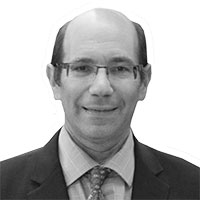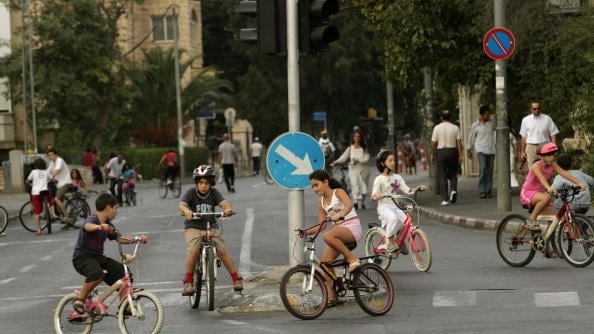Warning: this posting contains good news and positive thoughts about Israel, Jerusalem and the Middle East.
So many of the narratives about Israel are so negative, especially in the media, that we often fail to note the poetry of the everyday that comes from living in the Jewish state, or even the most mundane prose of life that shows that things are functioning. What I think of as the Great Israel Disconnect distorts: the gap between the hysterical, judgmental, apocalyptic headlines, and the calmer, happier, more meaningful experiences of most Israelis, most of the time (be they Jewish, Christian or Muslim) is confusing. As a result, some dismiss all the media jeremiads as propagandistic and jaundiced, while others dismiss any positive reports as propagandistic and deceitful.

In the few hours before Yom Kippur begins in Jerusalem, it is worth contemplating the magic of that day in the Jewish State, as an indicator of many of Israel’s greatest successes. For starters, Yom Kippur, the holiest day in the Jewish calendar, is not really just one “yom” day—despite its name. It is the culmination of a 40-day process that begins as the last month of the year, Elul, begins. Especially in Jerusalem, there is a flowering of Jewish learning as people study texts about forgiveness, piety, the power of prayer, the meaning of life. In the Sephardic (Spanish/Middle Eastern) tradition, there are additional “Slichot” forgiveness prayers for an entire month—with some waking up at midnight or at 4 am to recite them; in the Ashkenazic (Eastern European) tradition those prayers only begin a week before the Jewish New Year. This week, I had the privilege of participating in Slichot prayers at midnight at the Shalom Hartman Institute’s Charles E. Smith High School for Boys, which my two sons attend. Experiencing the mix of Ashkenazic and Sephardic prayers and rituals was incredibly moving, offering a counternarrative of communal respect and interweaving contradicting the usual focus on ethnic gaps and communal tensions.
Similarly, during a pre-Yom Kippur jog through the Old City, I witnessed a very different Jerusalem than the one I usually read about. I always tell visitors to the city never to walk alone in the Old City. That is a historical spur, not a safety warning. "Walk with someone on your shoulder," I like to say. "It can be David or Solomon, the kings who built the city, Jesus or Mary for our Christian friends, or an ancestor or relative who never made it here—and whom you are now representing." In fact, the real hazards I faced—as usual in my jogs—were slippery steps, rocky roads and the occasional bicyclist. In hundreds of jogs through the Old City over more than five years, I have never witnessed an argument, never tasted fear (despite being a hyper-aware and cautious native New Yorker). The only clash I have ever experienced occurred when a young Arab cyclist and I each turned a blind corner and nearly collided. Instead, we ended up in an awkward (but manly!) hug. I like to think of that as a metaphor for what we could achieve, rather than the collisions that we more frequently read about.
As I jog through the Old City, I always imagine myself a human thread, weaving together the past and the present, uniting the different communities, as I traverse a borderless entity. I am neither deaf to Palestinian cries for national fulfillment nor numb to the occasional tensions and pressing issues. But I also see a calm, a functionality, a vitality that is equally palpable, and in fact defines the experiences of most Jerusalemites, which is why the population keeps growing and demands for Israeli citizenship papers from the Eastern (Palestinian) Jerusalem side grow too.
Finally, as Yom Kippur itself begins, I will see—as I have seen repeatedly before—a tremendous display of Jewish unity. Israel turns into one vast spiritual retreat center, as by custom not law cars disappear from the streets, and a deep, elevating spiritual quiet envelops the country. As the Jerusalem Post reports, "approximately two-thirds of Jewish Israelis will fast this Yom Kippur and over 80 percent will use the day either to pray or for general introspection," blurring the usual distinctions between religious and non-religious. The highlight for many of us in Southern Jerusalem will be the post-Kol Nidre Emek Refaim promenade. After the evening prayers, hundreds of Jerusalemites descend on Emek Refaim, the increasingly fashionable shopping and restaurant boulevard. In a modern equivalent of the Easter Parade, they simply walk—or bicycle—up and down, greeting neighbors and friends, enjoying the liberation from the noise of cars, the burdens of work, and the compulsions of the clock. And—judging by the array of clothing (mostly but not exclusively white) and the happy cyclists pedaling up and down—this is a mix of Israelis, of observant and non-observant, just enjoying the magic.
The Yom Kippur repentance ritual demands that we reconcile with our fellow human beings before we reconcile with God. Note that we are supposed to make our peace with all humans, not just Jews. In toasting the Jerusalem I see—which so frequently unites Ashkenazic and Separdic, Muslim and Jew, religious and secular, simply in the act of being safe, happy and productive in Israel 2012—I pray that the normalcy I experience will become epidemic and standard, that the reconciliation required will be among peoples not just individuals, and that the only clashes we have next year will end, as mine did, in an awkward (but manly!) embrace.






